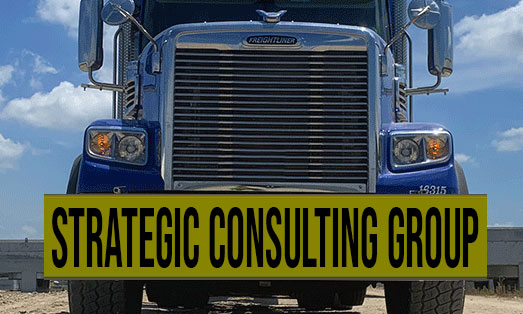Risk Mitigation: Implementing strategies to minimize project risks. explained
Found it! Regular Reviews in RioTinto Stadium Upgrades
Mastering the Game: How to Keep Your Projects on Track (Q&A Style)
Q: What’s the biggest secret to keeping projects on track?
A: Planning for the unexpected! Just like a skilled player in a game of tag, you need to be ready to adapt to unexpected twists and turns.
Q: How do you adapt to unexpected situations in project management?
A: Mastering risk management is key. Think of it like this: what happens if your star player gets injured? You need a plan to keep the game going!
Q: So, what are some effective risk mitigation strategies?
**A: Here are two: **
- Regular Meetings: Get the team together weekly to discuss progress, spot potential delays, and brainstorm solutions.
- Communication is Key: Make sure everyone understands the contingency plan and their role in it. Just like a team in a game, everyone needs to know their position and how to cover for each other.
Mastering the Game: How to Keep Your Projects on Track
TL;DR: Planning for the unexpected is key to a successful project. Risk mitigation strategies help identify potential problems, create solutions, and keep your project moving forward. This article explores different strategies, including regular reviews and real-life examples like the Rio Tinto Stadium Upgrades.
Why Worry About Risks?
Imagine you’re building a sandcastle on the beach. You carefully plan, choosing the perfect spot and gathering the best sand. But what happens if a sudden wave washes it away? That’s what risks are like in projects. They’re like those unpredictable waves, threatening to derail your plans.
By identifying risks early on, we can create a plan to minimize their impact. Think of it like building a wall around your sandcastle, protecting it from the waves.
Strategies for Mitigating Risks
1. Regular Reviews: Checking the Temperature
Just like checking the oven temperature while baking, regular project reviews are essential. They help us monitor progress and identify potential problems before they get out of hand. Here’s how it works:
- Set a schedule: Decide how often you’ll hold reviews (weekly, bi-weekly, monthly).
- Gather the team: Get everyone involved in the project to discuss progress, challenges, and upcoming milestones.
- Identify risks: Discuss any potential problems or roadblocks that could arise.
- Create solutions: Brainstorm strategies to prevent or minimize the impact of those risks.
2. Contingency Planning: Having a Backup
Imagine you’re on a hike and realize you forgot your water bottle. A contingency plan would be like having a backup bottle in your backpack. It’s a safety net for when things go wrong.
- Identify potential problems: What could go wrong in your project?
- Create alternative solutions: How can you address those problems if they happen?
- Communicate the plan: Ensure everyone on the team understands the contingency plan and their roles in it.
3. Risk Transfer: Shifting the Responsibility
Sometimes, it’s impossible to control a risk completely. Think of it like a game of tag – if you’re the one being chased, it might be easier to pass the responsibility to someone else.
- Insurance: For risks like natural disasters or accidents, insurance can provide financial protection.
- Contracts: Clear contracts with suppliers and contractors can outline responsibilities and minimize potential disputes.
Case Study: Rio Tinto Stadium Upgrades
The Rio Tinto Stadium in Utah is home to a Major League Soccer team. They recently underwent a major upgrade project. To ensure success, they employed risk mitigation strategies:
- Regular meetings: The project team held weekly meetings to discuss progress, identify potential delays, and brainstorm solutions.
- Contingency planning: They created a plan for potential weather disruptions and developed alternative construction methods if needed.
- Risk transfer: The project team utilized insurance to cover unexpected events and entered clear contracts with vendors.
The result? The stadium upgrade project was completed on time and within budget. By embracing risk mitigation strategies, the project team was able to navigate unforeseen challenges and achieve success.
Summary: Mastering the Game
Risk mitigation is not about avoiding all challenges, but about being prepared for them. By regularly reviewing progress, creating contingency plans, and using strategies like risk transfer, we can reduce the impact of potential problems. Just like a skilled player knows how to adapt to unexpected situations on the field, learning to effectively manage risks is essential for successful project management.
More on Risk Mitigation: Implementing strategies to minimize project risks.…
- ## SEO Keywords: Risk Mitigation and Regular Reviews
- General:
- Risk mitigation strategies
- Project risk management
- Risk assessment and mitigation
- Minimize project risks
- Implementing risk mitigation
- Effective risk management
- Project success strategies
- Avoiding project failure
- Project risk analysis
- Risk mitigation plan
- Risk register
- Risk management tools
- Regular project reviews
- Project progress reviews
- Monitoring project risks
- Assessing project risks
- Specific:
- Financial risk mitigation
- Schedule risk mitigation
- Technical risk mitigation
- Human resource risk mitigation
- Legal risk mitigation
- Environmental risk mitigation
- Quality risk mitigation
- Security risk mitigation
- Risk mitigation in software development
- Risk mitigation in construction projects
- Risk mitigation in marketing campaigns
- Risk mitigation in product launches
- Regular project status reviews
- Risk review meetings
- Project milestone reviews
- Change management reviews
- Risk mitigation best practices
- Risk mitigation training
- Risk management software
- Project risk assessment tools
- Risk management templates
- Project management methodologies
- Agile risk management
- Waterfall risk management
- Risk mitigation techniques
- Risk mitigation case studies
- Risk mitigation examples
- Long-tail Keywords:
- How to mitigate project risks effectively
- Best practices for risk mitigation in project management
- The importance of regular project reviews
- How to conduct a risk review meeting
- Tools and techniques for assessing project risks
- Risk mitigation strategies for different project types
- Creating a comprehensive risk mitigation plan
- Case study: Successful risk mitigation in [industry/project type]
- Risk management training courses online
- Free risk assessment templates for project managers
- Top 10 project risks and how to mitigate them
- Note:** This list is not exhaustive but provides a comprehensive starting point. You can adapt and modify these keywords further based on your specific target audience, content, and industry.


